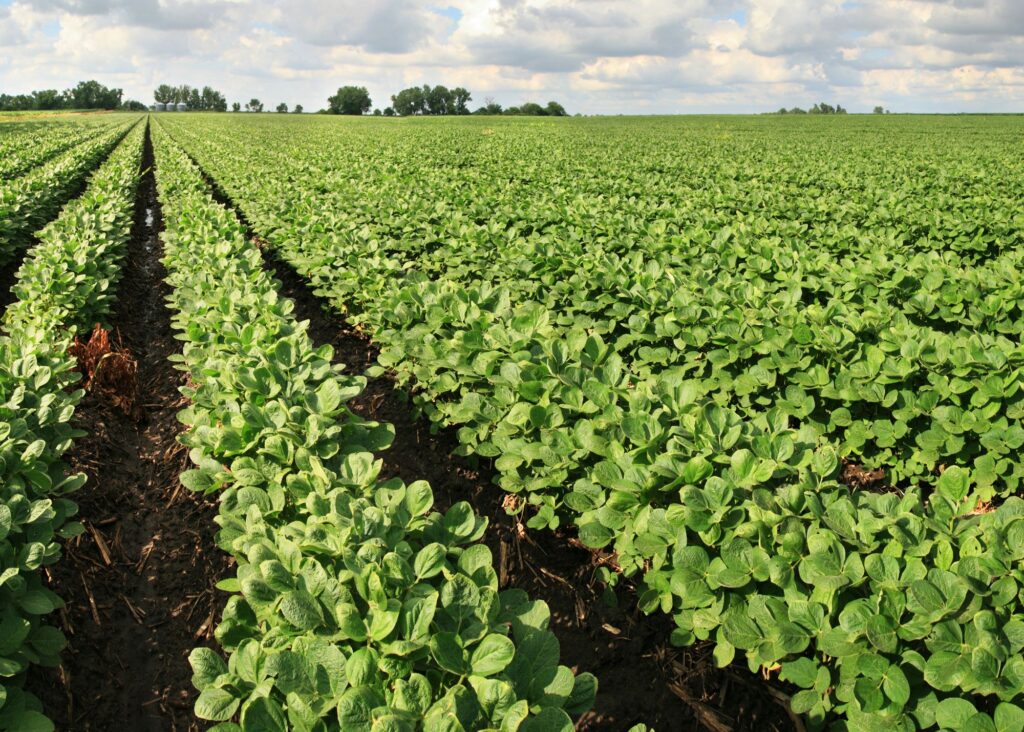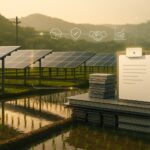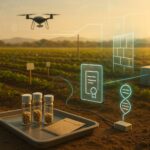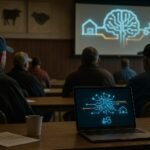In the heartland of America’s soybean fields, a silent adversary lurks—fungal diseases that can decimate crops and livelihoods. Traditionally, farmers have relied on visual inspections and reactive measures, often discovering infections only after significant damage has occurred. This delayed detection not only hampers yields but also leads to excessive pesticide use, impacting both the environment and farmers’ bottom lines.
Table of Contents
ToggleThe Challenge of Early Detection
Crop diseases, particularly fungal infections, present a formidable challenge to agriculture. These pathogens can spread rapidly, and early symptoms are often subtle or invisible to the naked eye. Conventional detection methods, such as manual scouting and laboratory testing, are labor-intensive and may not provide timely insights. As a result, interventions often come too late, leading to reduced yields and increased chemical inputs. The need for innovative solutions that enable early and accurate disease detection has never been more pressing.
InnerPlant’s Technological Breakthrough
Enter InnerPlant, an agtech innovator that has developed a groundbreaking approach to plant health monitoring. By genetically engineering crops like soybeans to express a fluorescent protein in response to specific stressors, InnerPlant enables plants to signal distress before visible symptoms appear. These “living sensors” emit optical signals detectable by specialized equipment on tractors, drones, or even satellites, allowing for real-time, field-wide monitoring. This proactive system empowers farmers to address issues promptly, optimizing crop protection strategies and potentially reducing pesticide usage.
The CropVoice Platform
- Functionality: InnerPlant’s CropVoice platform integrates data from sentinel plots planted with InnerSoy™—a genetically engineered soybean that emits fluorescent signals under fungal stress. This data is processed using advanced predictive models to provide early detection of fungal infections, enabling farmers to implement timely and effective crop protection strategies.
- User Experience: Subscribers to CropVoice receive straightforward “spray/don’t spray” recommendations based on real-time plant signals, combined with environmental data. These insights are delivered through existing farm management software, facilitating seamless integration into current farming operations.

Pilot Programs and Collaborations
- Field Trials: In 2024, InnerPlant partnered with GROWMARK to pilot InnerSoy across the Midwest. Small plots were established to detect early signs of fungal infestations, with data collected to enhance InnerPlant’s machine-learning tools and agronomic intelligence.
- Partnerships: Collaborations with industry leaders such as John Deere and Syngenta have been pivotal. In late 2023, a joint pilot program demonstrated the efficacy of early fungal disease detection in soybeans, aiming to reduce pesticide use and improve yields.
Regulatory Milestones
- FDA Consultation: InnerPlant achieved a significant regulatory milestone by completing the FDA’s New Protein Consultation process for the fluorescent protein used in InnerSoy. This step underscores the safety and compliance of their technology, paving the way for broader adoption.
- USDA Approval: Prior to the FDA consultation, InnerSoy received approval from the United States Department of Agriculture, further validating the safety and potential of InnerPlant’s innovations.
Market Reception and Funding
- Investor Confidence: InnerPlant’s innovative approach has attracted significant investment. In July 2024, the company secured a $30 million Series B funding round led by an alliance of large North American farmers, including Coutts Agro. This investment underscores the agricultural community’s recognition of the technology’s potential to enhance crop yields and sustainability.
- Accolades: The company’s groundbreaking work has been widely recognized. InnerPlant was named to Fast Company’s annual list of the World’s Most Innovative Companies in 2024, highlighting its role in transforming agricultural practices.
Implications for Sustainable Agriculture
- Environmental Benefits: By enabling early detection of crop stress, InnerPlant’s technology allows for targeted application of treatments, reducing the overuse of fertilizers and pesticides. This precision agriculture approach minimizes environmental impact, preserving soil health and biodiversity.
- Economic Advantages: Farmers benefit economically through cost savings on chemical inputs and improved crop yields. Early intervention facilitated by real-time plant signals leads to more efficient resource use and higher productivity.
Future Prospects
- Expansion Plans: InnerPlant aims to extend its technology beyond soybeans to other major crops like corn and cotton. The company envisions a future where multiple stress signals are integrated into every seed, enabling comprehensive, real-time field monitoring.
- Technological Developments: Ongoing collaborations with industry leaders such as John Deere and Syngenta are expected to enhance the integration of InnerPlant’s technology with advanced agricultural machinery. This synergy promises to further revolutionize crop management by enabling precise, automated responses to plant signals.
InnerPlant’s CropVoice platform represents a transformative leap in agricultural technology, empowering plants to communicate their needs directly to farmers. This innovation facilitates proactive crop management, leading to increased yields and sustainability.
Embracing such cutting-edge technologies is crucial for stakeholders in the agricultural sector. By adopting solutions like CropVoice, the industry can move towards a more sustainable and productive future, addressing global food security challenges while preserving environmental health.




